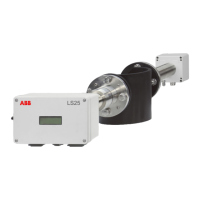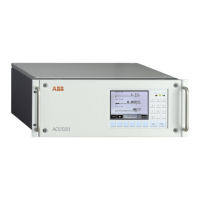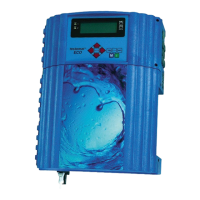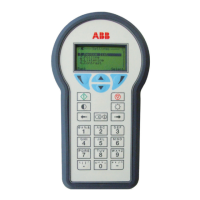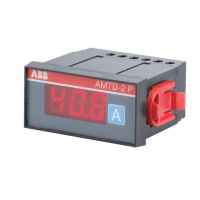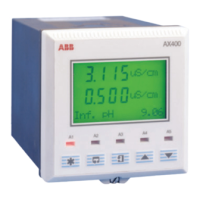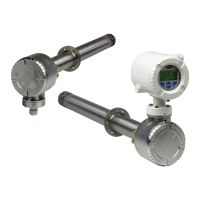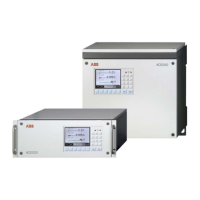AO2000 CONTINUOUS GAS ANALYZERS | OI/AO2000-EN REV. B 261
Uras26: Notes for calibrating
Calibration
Calibration can be performed in range 1 and range 2 for each sample com-
ponent. It is always a common calibration and thus affects both measuring
ranges.
Calibration cells
The use of calibration cells allows the analyzer module to be calibrated
without using test gas containers.
A calibration cell can be installed in each of the analyzer module’s beam
paths. Each calibration cell is filled with a test gas matched to the sample
components and measurement ranges set up in the corresponding beam
path.
Test gases for zero calibration
A zero gas is required for zero calibration in any case.
In addition to nitrogen, ambient air can be used for zero calibration. Water
vapor must be absorbed using a cooler. If the ambient air contains sample
gas components, these must be removed with a suitable absorber (for CO:
HOPCALIT
®
, for CO
2
: Sodium hydroxide on substrate).
Test gases for end-point calibration without calibration cells
A test gas is required for each detector for span calibration without calibra-
tion cells. In the case of automatic and externally controlled calibration, a
test gas mixture is required for all detectors since all are calibrated simulta-
neously. The span gas concentration should be 70 to 80 % of the end value
of the largest measurement range.
Test gases for span calibration of suppressed ranges
For suppressed ranges, the span gas concentration must be within the sup-
pressed range. If possible it should be equal to the end value of the sup-
pressed measuring range (and thus the end value of the larger measurement
range).
Test gases for automatic calibration
In principle a test gas for each sample component is required for the inter-
nally or externally controlled automatic calibration.
A test gas mixture containing each sample component in the appropriate
concentration may be used only when all sample components have no mutu-
al cross-sensitivity and/or carrier gas influences.

